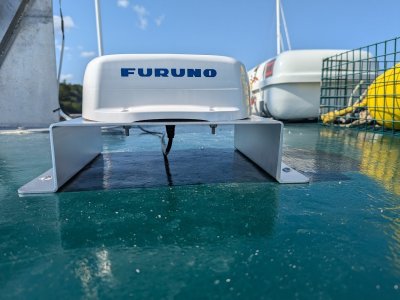Hi, I'm getting ready to order the electronics package for my new build- 40' heavy displacement cutter. So far this is what I'm considering-
Navpilot 711-c
700 Processor
Rudder ref.
TZT10x
DRS2DNXT
SCX20
F15001 wind/ 30m cable
Not sure about transducer type. Can the SCX20 be mounted on the mast well below the radar? I have the AP cylinder and pump. Any suggestions?
Thanks!
Navpilot 711-c
700 Processor
Rudder ref.
TZT10x
DRS2DNXT
SCX20
F15001 wind/ 30m cable
Not sure about transducer type. Can the SCX20 be mounted on the mast well below the radar? I have the AP cylinder and pump. Any suggestions?
Thanks!




